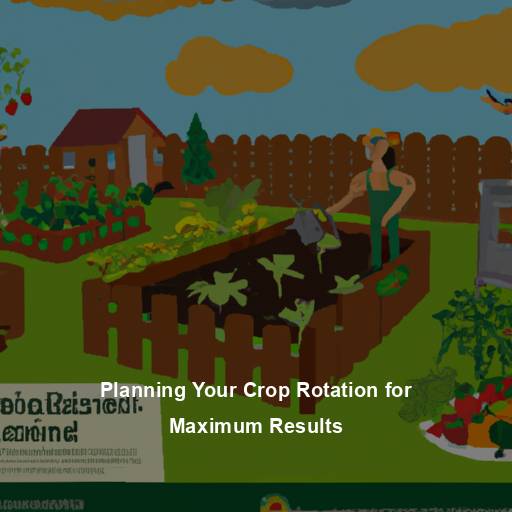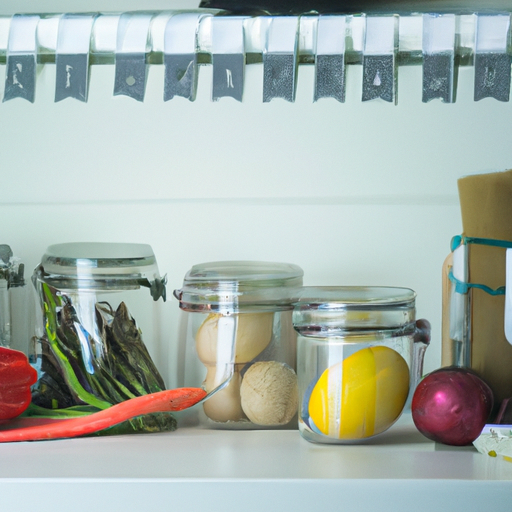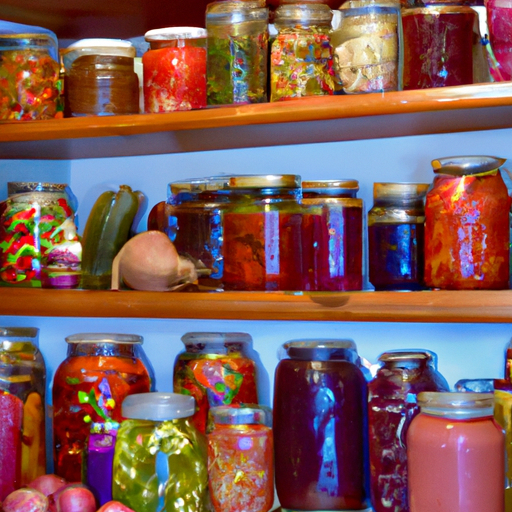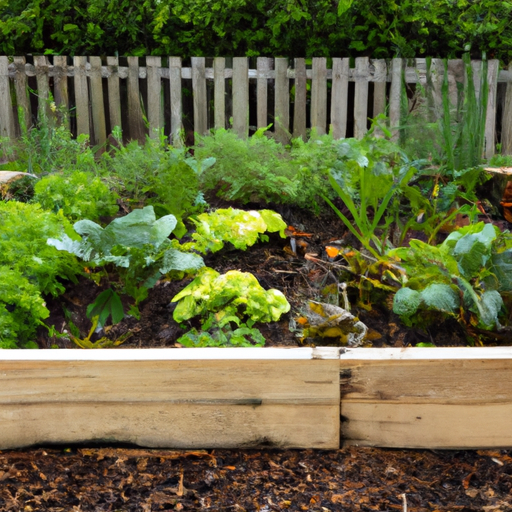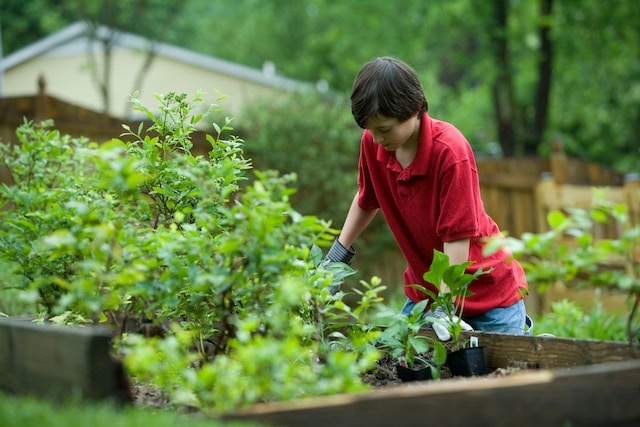As Master Gardeners, we know that successful crop rotation is essential to achieving maximum results in our gardens. Crop rotation involves the practice of planting different crops in a particular order over several years to improve soil health and reduce pests and diseases. Proper planning of your crop rotation can have a significant impact on your garden’s productivity.
Planning your crop rotation begins with understanding what types of plants you want to grow, their nutrient needs, and how long they will take to mature. By carefully selecting which crops to plant together in each bed or section of your garden, you can maximize yields while minimizing pest problems and soil depletion.
In this article, we’ll explore some tips for effective crop rotation planning, including rotating between plant families, incorporating cover crops, and paying attention to timing considerations. With a little bit of forethought and careful planning, you’ll be well on your way to growing healthy, productive plants year after year!
Understanding The Importance Of Crop Rotation
As a Master Gardener, understanding the importance of crop rotation is crucial.
Picture this: you have a garden with only one type of crop.
As time goes by and you continue to plant the same crop in the same soil, your plants will become more susceptible to pests and diseases.
However, if you incorporate crop diversity into your rotation plan, it can help prevent these issues from occurring.
Furthermore, rotating crops allows for nutrient-rich soil that’s less prone to erosion, which ultimately leads to healthier plants and higher yields.
By incorporating this practice into your gardening strategy, you’ll be on track towards creating a thriving and sustainable garden ecosystem without having to rely heavily on pesticides or fertilizers.
Identifying Your Plant Nutrient Needs
Now that we understand the importance of crop rotation, let’s dive into identifying your plant nutrient needs.
Before planting any crops, it is crucial to conduct a soil analysis to determine its nutrient content and pH level. This helps you know which nutrients are lacking in your soil, so you can choose plants that will thrive under those conditions or add fertilizers accordingly.
Crop diversity should also be taken into consideration when planning your rotation. Growing different types of crops each year not only improves soil health but also reduces pest and disease pressure, as pests tend to have specific crop preferences.
By implementing these practices, you’ll ensure maximum results from your garden while promoting a sustainable environment for future generations to enjoy.
Rotating Between Plant Families
When planning your crop rotation, it is important to consider rotating between plant families. This helps to prevent the build-up of soil-borne diseases and pests that can damage crops.
Additionally, rotating between different plant families allows for companion planting, which can improve soil health and increase yields. For example, legumes such as beans and peas fix nitrogen in the soil, benefiting crops like corn or tomatoes planted in subsequent seasons.
Crop diversity within each family is also crucial for maintaining a healthy garden ecosystem. By incorporating a variety of plants within each family, you’ll ensure that your garden remains resilient to pests and disease outbreaks.
Overall, rotating between plant families with diverse crops is essential for maximizing results in your garden while promoting sustainable practices.
Incorporating Cover Crops For Soil Health
As a Master Gardener, I like to think of cover crops as the multivitamins for your soil. Just like how taking daily vitamins can improve our overall health and wellbeing, incorporating cover crops into your crop rotation plan can greatly benefit the health of your soil.
Choosing appropriate cover crops is key to maximizing these benefits. Some popular options include legumes such as clover or vetch which fix nitrogen in the soil, grasses that add organic matter and help prevent erosion, and brassicas which can suppress weeds and diseases. However, it’s important to consider what works best for your specific climate and soil type before selecting a mixture.
Benefits of cover crop mixtures also include increased biodiversity in the soil ecosystem, improved water retention, reduced nutrient leaching, and enhanced pest control. By including cover crops in your planting strategy, you’re not only improving your current yields but investing in long-term soil health for future harvests.
Timing Considerations For Effective Rotation Planning
As a Master Gardener, it’s important to consider the seasonal variations when planning your crop rotation. The timing of planting and harvesting can have a significant impact on the success of your crops.
For example, certain plants may thrive in cooler temperatures while others require warmer weather to grow properly. It’s crucial to take into account these differences and plan accordingly.
Another key factor in effective rotation planning is understanding the role of soil microbes. These tiny organisms play an essential part in nutrient cycling and maintaining healthy soil structure.
However, not all crops benefit from the same microbial communities. Some plants prefer soils with high fungal activity, while others do better with more bacterial populations. By rotating crops that have different microbial needs, you can help maintain balance within your soil ecosystem.
Incorporating these timing considerations and knowledge of soil microbes into your crop rotation plan will result in maximum results for your garden year after year. Remember to pay attention to seasonal changes and adjust accordingly, as well as considering the unique needs of each plant and how they interact with the soil microbiome.
With thoughtful planning and care, you’ll be able to enjoy a thriving garden for seasons to come without ever having to compromise on quality or yield!
Frequently Asked Questions
Can Crop Rotation Help Control Pests And Diseases In My Garden?
Ah, the age-old question of how to control pests and diseases in your garden. It’s a common problem that plagues many gardeners year after year.
But what if I told you there was a natural solution? One that not only helps with pest control but also promotes healthy soil and better yields.
The answer lies in crop rotation. By diversifying your crops, you can attract beneficial insects that prey on harmful pests while reducing the likelihood of soil-borne diseases taking hold.
So instead of relying on chemical pesticides or expensive treatments, consider incorporating crop rotation into your gardening routine for maximum results.
How Long Should I Wait Before Planting The Same Crop In The Same Spot?
When it comes to crop rotation benefits, soil health is a top priority.
One important consideration for maintaining healthy soil is knowing how long to wait before planting the same crop in the same spot.
Most experts recommend waiting at least two years between plantings of the same family or type of crop.
This helps prevent disease and pest buildup in the soil, as well as allowing time for nutrients to replenish.
However, there are some exceptions to this rule – for example, legumes can actually improve soil fertility when planted in alternating cycles with other crops.
As a Master Gardener, I always stress the importance of thoughtful planning and experimentation when it comes to maximizing your garden’s potential through effective crop rotation practices.
Can I Rotate Between Annual And Perennial Crops?
Well, well, well. Can you rotate between annual and perennial crops?
The age-old question that has plagued many a gardener for generations. Benefits and drawbacks abound when it comes to mixing things up in the garden. Success stories and failures alike litter the path of those who have dared to take on this challenge.
As a Master Gardener, I can tell you that while rotating between annuals and perennials may seem like a great idea at first, it’s not always sunshine and rainbows. Sure, you’ll get some variety and potentially better soil health, but there are also potential issues with disease management and yield consistency.
So go ahead, give it a try if you dare – just be prepared for whatever Mother Nature decides to throw your way!
What Are Some Cover Crop Options For My Specific Region?
When it comes to choosing cover crops for your specific region, there are a variety of options available that can provide numerous benefits. Cover crop benefits include improving soil health and fertility, preventing erosion, suppressing weeds, and providing habitat for beneficial insects.
However, before selecting a cover crop it is important to consider regional weather considerations such as temperature and rainfall patterns in order to choose the best planting techniques. Additionally, cover crop selection should be based on factors such as soil type and intended use of the land.
Overall, incorporating cover crops into your crop rotation plan can greatly enhance the health and productivity of your garden or farm.
How Do I Create A Crop Rotation Plan For A Small Garden Space?
Creating a crop rotation plan for a small garden space can seem daunting, but with proper crop variety selection and soil nutrient management, it can be quite simple.
As master gardeners know, rotating crops helps prevent disease buildup in the soil and encourages healthy plant growth.
To begin the process, start by selecting a variety of crops that are compatible with your local climate and soil type.
Then, consider how each crop affects the nutrients in the soil and plan to rotate them accordingly.
By carefully planning your crop rotation, you can maximize yields and keep your garden thriving year after year.
Conclusion
In conclusion, crop rotation is an effective method for controlling pests and diseases in your garden while also improving soil health. By rotating crops and cover crops, you can break pest and disease cycles and ensure that the soil remains fertile. Remember to wait at least two years before planting the same crop in the same spot.
To create a successful crop rotation plan for your small garden space, consider factors such as plant families, growing season length, and regional climate. By incorporating annuals and perennials into your rotation and choosing appropriate cover crops for your region, you can enjoy bountiful harvests year after year.
As Master Gardeners, we know that proper planning is key to achieving maximum results from our gardens. So take the time to develop a solid crop rotation plan – your plants (and stomach) will thank you!
